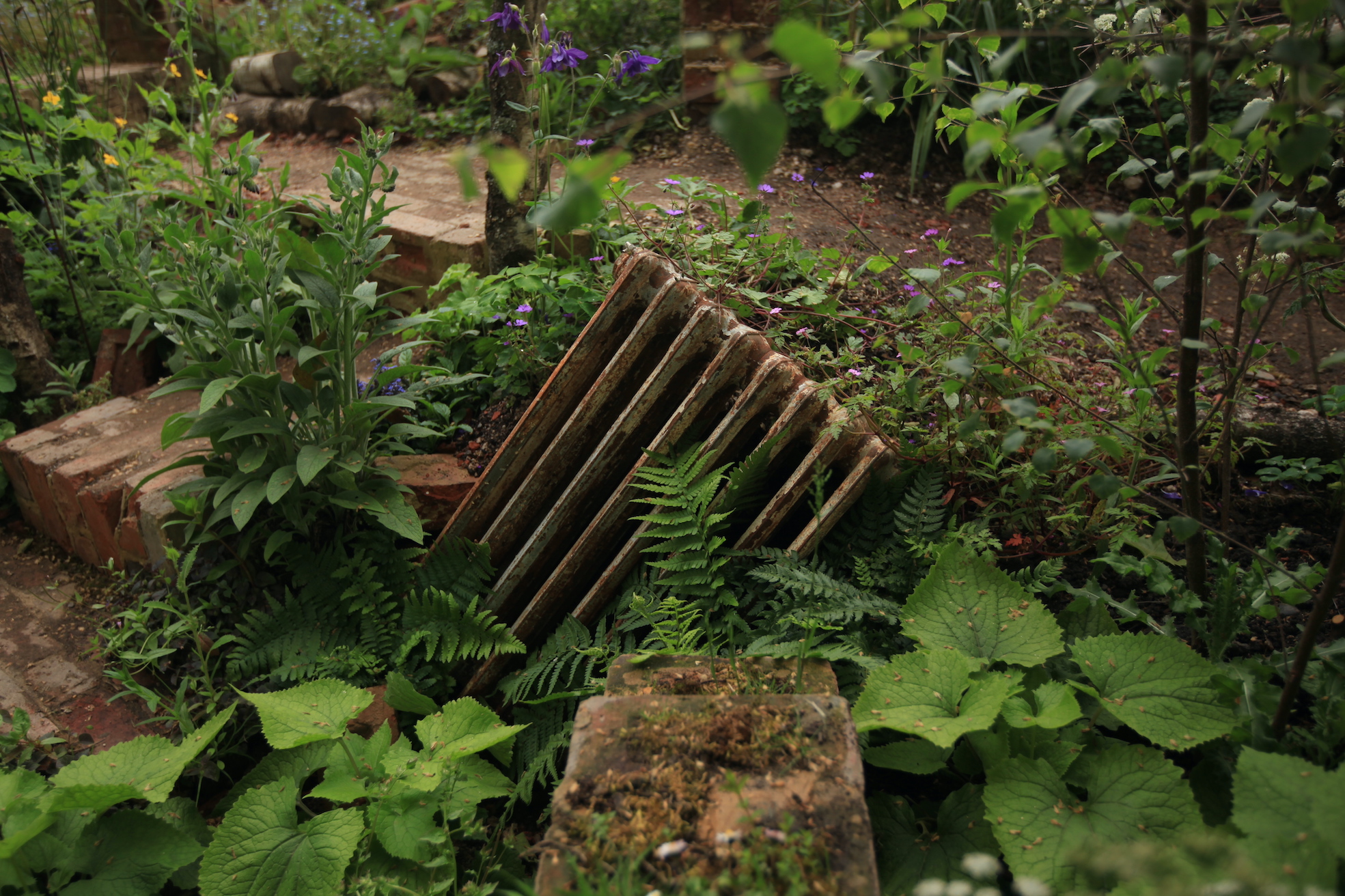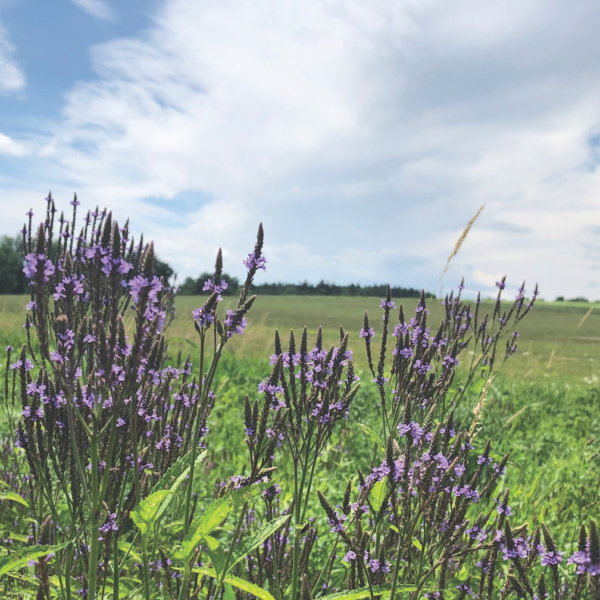The idea that an old, clapped-out garden can have beauty is sometimes lost on enthusiastic homeowners, keen to sweep everything away and make their mark. Yet increasingly for garden thinkers as well as designers, extant topography and remnants have value. Using what you’ve got is part of the “closed loop” approach to gardening—in which low-nutrient soil stays that way, and broken concrete and bricks are not only re-used as hardscape but displayed unapologetically as part of the design. For atmosphere, there is nothing like a rediscovered path, or the rehabilitation of elements that give clues to the layers of former inhabitants.
One of the gardens at Chelsea this year, the final show garden of Cleve West (he says), was a heart-rending evocation of a ruined house and garden, intended to draw attention to the plight of homelessness among young people (and the charity Centrepoint). It was also about redemption through beauty, and one idea that rang out was the connection between looking out for people and giving support to other ecosystems. Like ruins, a relaxed and unfussed-over garden has huge appeal for smaller creatures, and therefore makes stewarding that space far more rewarding.
Photography by Jim Powell.
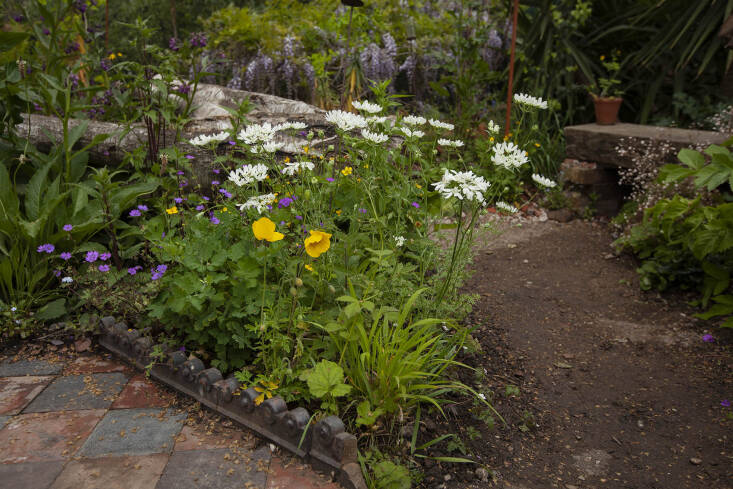
A “wildlife garden” is not just about putting up boxes for bats and birds or planting nectar-rich flowers for pollinators—and then carrying on as normal. There is a lot more observation involved. Resisting the urge to turn gardening into outdoor housework, stand back and notice when the sandy substrate left over after moving pavers becomes an attractive destination for nesting bees, dust-bathing sparrows, and other sun-basking creatures. Or when the old terracotta paving with edging that is not spic-and-span provides further shelter in its cracks and crevices. Or that native wildflowers/weeds provide nectar, too, something that we don’t always consider when browsing the “Perfect for Pollinators” racks at a garden center (and these plants are often pre-poisoned, ready for shelf life).
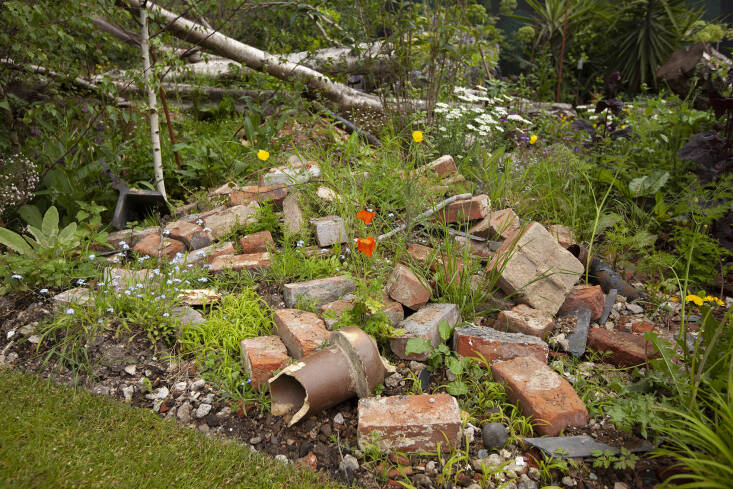
Piles of building leftovers make beautiful topography for insects, spiders, and other arthropods who seek out crevices and hollow objects, like the ceramic pipe in the foreground, shown here. “I liked the idea that the garden continued to explore the notion of ‘home’ for other life forms,” says West.
The Royal Horticulture Society has said of the designer: “If anyone deserves the keys to the Bull Ring Gate at Chelsea it’s Cleve West.” His last two gardens won Best in Show, one after the other. Unhappy with the wasteful nature of these events, Cleve had vowed only to return if it was for charity, and ideally with an installation that would not be financed through its fundraising. Project Giving Back is a foundation that sponsors designers, for charities like Centrepoint, to bring their causes into the generous spotlight of the Chelsea Flower Show.
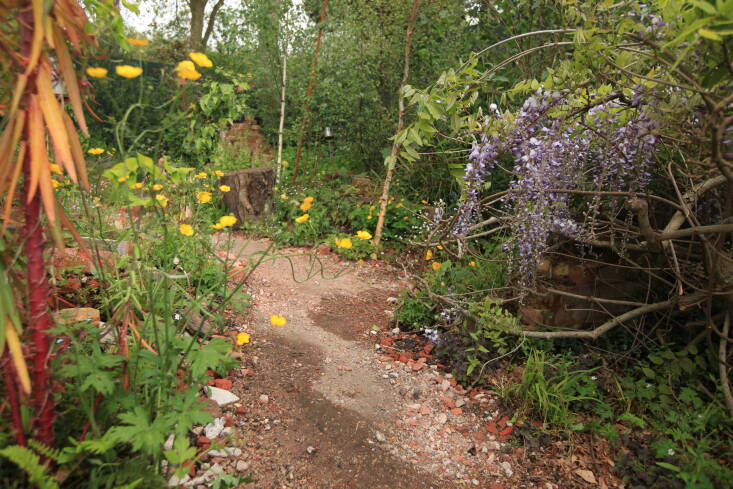
Part of the charm of this garden is the evocation of historical gardening, the yuccas of the ’70s that people don’t plant anymore, the aspirational wisteria collapsed under its own, unpruned, weight. These are mixed with pioneer, successional species such as birch and buddleja, as the cultivated garden slowly morphs into woodland. Home gardeners: this is where you step in, creating a disturbance with a light touch, and stepping away again.
